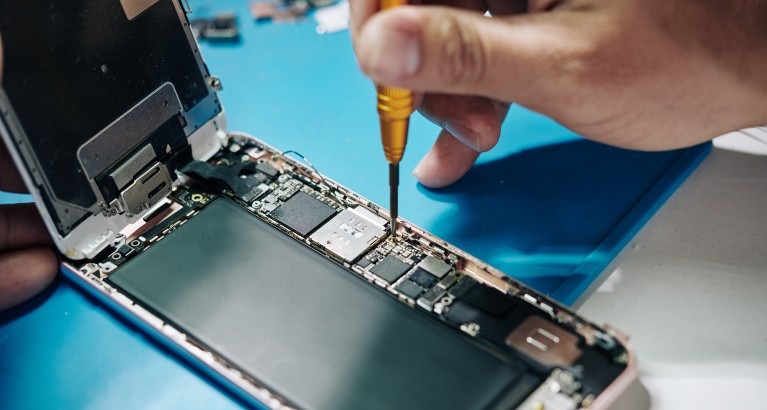Slow growth
Glass Inc., the market leader in the mobile and automotive camera industry, seeks to develop new market segments to drive the company’s further growth, relying upon its strong capability of optics technology. Through nearly a decade of efforts, they have gained market presence in 3 new market segments: microscopes, device inspection and medical monitoring and analysis. However, management felt that the single-digit growth rate was not satisfactory, tried to find the root cause of the slow growth and make strategic changes accordingly if necessary.
Strategy analysis
By using the 3W1H strategic framework, Glass Inc. analysed possible ways to achieve their strategic objectives. They first recognised who the potential customers were, and which existing customers could be further penetrated, and then discussed what products or services could be offered to meet the customers’ needs. Having identified the target customers and the ‘right’ products and services to offer, they need to answer a key question: why should customers buy their products rather than their competitors? What is the competitive advantage of the product from the customer’s point of view? Following the value proposition analysis, the next question is what they need to do to deliver value to their customers.
As table 1 shows, the customers segment was identified, such as research institution, packaging & testing manufacturing, hospital department and the marketing offering was specified as products like microscopy, lens inspection system, bio scanners, the three main competitive advantage (like price, customisation and fast delivery service) was recognised as well. They deliver product value to customers by using their own direct sales channels, own manufacturing plant, the centralised lab and with the support of external logistic provider. The 5 innovation goals are defined as cost down, functionality improvement, new product development, new technology and service.
Existing innovation portfolio
Glass Inc. evaluates the existing innovation portfolio through matching the portfolio project to innovation goals, in their first cut of evaluation report (see table 2), new product development with 11 projects, account for 73% of total budget, new technology, cost improvement and functionality improvement account for 16%, 5% and 5%, respectively. Services account for a negligible proportion.
To preserve confidentiality, we aggregated information from the unit’s 3 market segments in the table.
The Innovation Needs are then transferred as headings in the below table.
| Manufacturing cost improvements | Functionality improvements | New product development | New technologies | Service | Total budget ($) |
|---|---|---|---|---|---|
| 5 projects | 4 projects | 11 projects | 11 projects | 2 projects | |
| Examples: key product design simplification, standardisation, procurement cost | Examples: better processing speed, trace beam sensitivity | New products in all 4 lines | Examples: Brightness detection, AI, LED illumination | Examples: SW trouble service, lead management | |
| $2.4m | $2.1m | $30.9m | $6.7m | $0.1m | $42.2m |
Through discussion and investigation, they recognised 2 main reasons for the current innovation portfolio:
- Under the pressure from routine KPI’s (i.e. annual revenue growth), management had to constantly look for the niche market and offer the customised product.
- Resources were allocated thinly into a variety range of product development projects as the competitive advantage of their existing products was not being built up, in their CEO’s words.
In fact, the company states: ‘we do not have the evident competitive advantage, as we were too focused on following up on our main competitors and trying to cover as much of the product range as possible in order to achieve short-term business revenues, which result in we do not have the very strong product that can compete others in terms of the product performance or functionality.’
After rounds of discussion and debate, they decided to make the strategy changes (i.e. narrow the product line and develop the product with strong competitive advantage.
Improved innovation portfolio
After one month, they iterated the innovation portfolio based on the changed strategy, in which 13 out of 33 projects are stopped, and 3 new projects are created, the total innovation budget is decreased from $42.2m to $34.1m by 19%. The improved innovation portfolio reflects the strategy changes that narrow the product line and focus on the most competitive product. It attempts to change the existing strategy value proposition by providing more powerful products rather than cost-competitive and customisation. On the one hand, the new portfolio triggers the strategic changes, on the other hand, the new portfolio further support the implementation of strategic changes.
| Manufacturing cost improvements | Functionality improvements | New product development | New technologies | Service | Total budget ($) |
|---|---|---|---|---|---|
| 2 projects (3 stopped) | 4 projects (4 stopped, 1 new) | 8 projects (4 stopped, 1 new) | 8 projects (4 stopped, 1 new) | 1 project (1 stopped, 1 expanded) | |
| $0.5m | $3m | $22.3m | $5.2m | $3.1m | $34.1m |
The workshop uncovered our secret that we are top in the KPI rankings but we don't have a competitive product.


